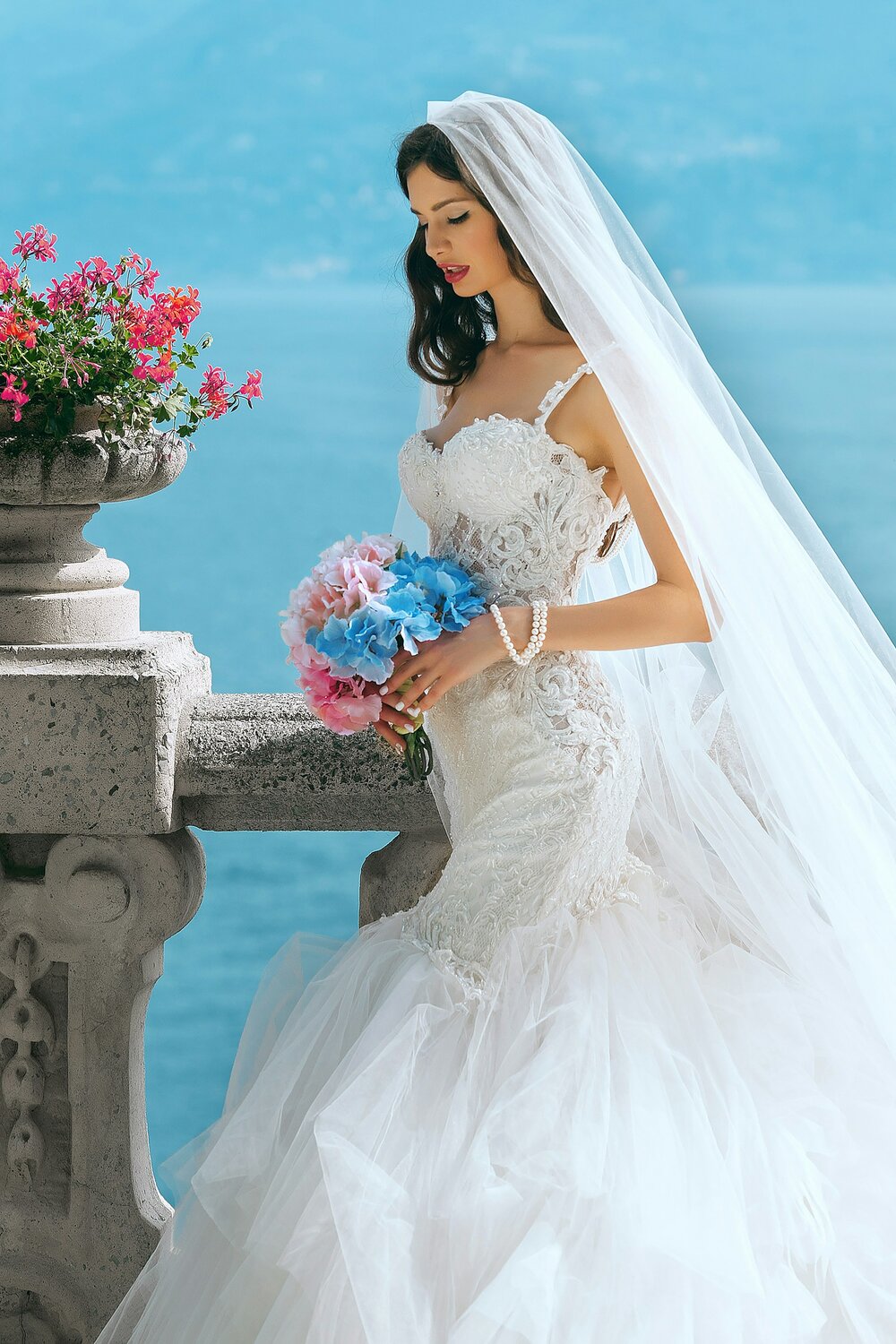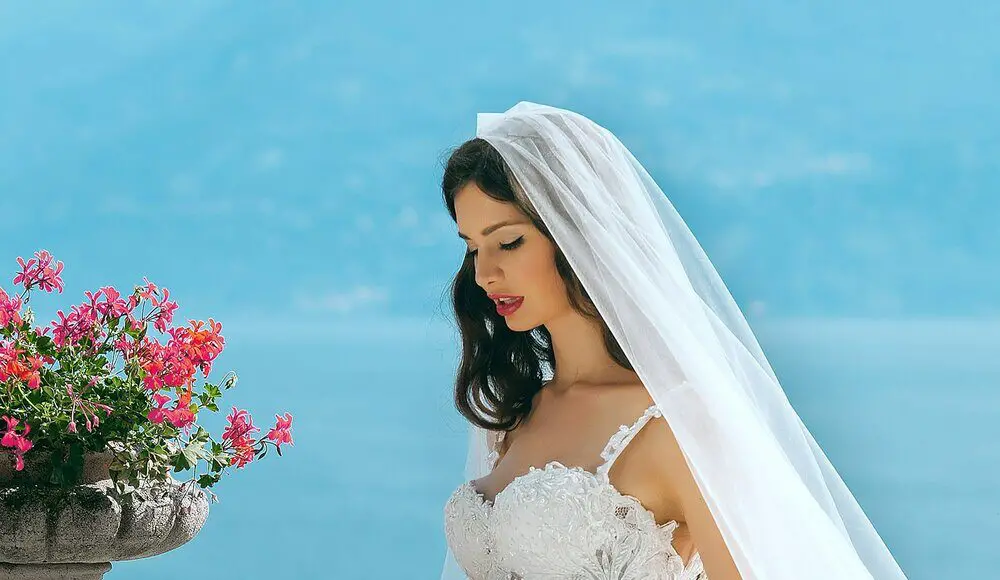Have you ever wondered how the wedding dress has evolved from simple garments to the stunning array of styles we see today?
This journey through time not only reflects changes in fashion but also in societal norms and cultural influences. By diving into the evolution of bridal fashion, we discover a rich tapestry of history, innovation, and inclusivity, culminating in the modern celebration of diversity with unique plus-size wedding dresses.
A Historical Perspective on Bridal Attire
Wedding attire has undergone a fascinating transformation over the centuries, with each era leaving its mark on what brides wear on their special day.
Beyond the simplicity of early bridal attire, these periods reveal a deep connection between wedding garments and societal roles. For instance, in ancient Rome, brides wore a special tunic tied with a “knot of Hercules,” symbolizing the durability of the marriage, a practice rich in symbolism yet practical in its essence. Medieval weddings often reflected the social hierarchy, with nobility wearing elaborate, richly colored gowns that demonstrated their status and wealth, setting a precedent for the symbolic importance of the wedding dress.

The Renaissance era was a turning point, where art and beauty played a central role in society. Bridal fashion from this period showcased the era’s reverence for craftsmanship, with dresses often embroidered with gold and precious stones, indicating not just wealth but also the familial connections and alliances. The Victorian era’s adoption of the white wedding dress wasn’t merely a fashion statement but a reflection of the era’s values around purity, innocence, and social display, influenced by Queen Victoria’s own choice for her wedding, which became a trendsetter for centuries to come.
Modern Innovations in Bridal Fashion
As we moved into the 20th and 21st centuries, bridal fashion became a field of constant innovation and personal expression.
The evolution of bridal wear in the 20th century was marked by the democratization of fashion. Designers like Vera Wang and Oscar de la Renta did not only create high fashion statements; they made bridal wear an extension of personal style and identity, introducing a range of silhouettes that catered to the changing body image and roles of women in society. The flapper dresses of the 1920s, for instance, were not just a style but a statement of liberation and freedom, reflecting broader social changes.
The current era marks a significant shift towards inclusivity and diversity in bridal fashion. The emphasis on unique plus-size wedding dresses is a response to a growing demand for the bridal industry to cater to real women’s bodies, challenging traditional beauty standards and celebrating diversity. This inclusivity goes beyond size; it’s about acknowledging and embracing the myriad ways women wish to express themselves on their wedding day. It’s a recognition that beauty comes in all forms and that every bride deserves to feel special and seen.
Embracing Technology and Sustainability in Bridal Fashion
In recent years, the bridal industry has begun to embrace both technology and sustainability, reshaping how wedding dresses are designed, produced, and chosen by brides around the globe.
With advancements in technology, brides now have unparalleled access to wedding dress shopping from the comfort of their own homes. Virtual fittings and augmented reality apps allow for a try-before-you-buy experience, revolutionizing the way wedding dresses are purchased. This digital shift not only offers convenience but also broadens the range of options available to include unique plus-size wedding dresses, ensuring every bride finds her perfect fit.
Sustainability has also taken center stage, with designers focusing on eco-friendly materials and practices. From dresses made of recycled fabrics to gowns designed for lower environmental impact, the bridal fashion industry is contributing to a greener planet. This movement towards sustainability encourages the production of high-quality, versatile wedding dresses that can be worn on multiple occasions or passed down through generations, including beautifully crafted unique plus-size options.
The Global Tapestry of Wedding Attire
As we delve deeper into the evolution of bridal fashion, it’s essential to recognize the rich diversity of wedding attire across different cultures and how it has influenced modern bridal trends.
Around the world, wedding attire is deeply rooted in cultural traditions, each telling its own story through colors, fabrics, and designs. From the vibrant saris of South Asia to the elaborate kimonos of Japan, these traditional garments have inspired contemporary bridal fashion, introducing a spectrum of styles that celebrate global heritage.
The celebration of cultural heritage in wedding attire is more than just an acknowledgment of traditional designs. It’s an opportunity to weave stories of heritage, identity, and personal history into the fabric of the wedding day itself. As designers incorporate elements from various cultures into their collections, they offer brides the chance to honor their heritage in a way that’s both respectful and contemporary, including the incorporation of unique plus-size wedding dresses that reflect these diverse inspirations.
This cultural richness has influenced modern wedding attire, leading to a fusion of styles that reflects our interconnected world. Designers are increasingly drawing on these diverse traditions to create unique bridal collections that cater to a global audience, including stunning unique plus-size wedding dresses that embrace and celebrate diversity. This blend of traditional and modern elements highlights the beauty of cultural diversity and its impact on the evolving world of bridal fashion.
Conclusion: Bridal Fashion as a Reflection of Progress
The evolution of bridal fashion is a mirror to society’s changing values and norms. From simple tunics to lavish gowns, the wedding dress has grown to symbolize more than just marital status; it reflects personal style, cultural heritage, and, most importantly, the inclusivity of love itself. As we continue to embrace diversity in all its forms, the future of bridal fashion looks as bright and varied as the brides who wear these stunning creations.
##





